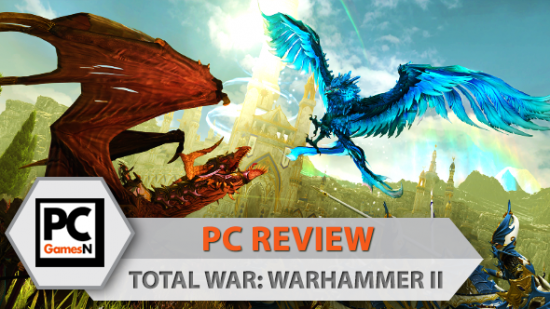Creative Assembly could have phoned it in with Total War: Warhammer II. The fantastical spin on their flagship strategy series will ultimately be a trilogy, with all 15 factions from the tabletop game’s eighth edition playable on a huge map after the third entry. This will require some inter-compatibility across all three games, so if Warhammer II turned out to be nothing more than a new map and four new factions, CA almost had their excuses ready-made.
Instead, they have taken what made the original Total War: Warhammer so good and looked for every opportunity to wring yet more value from each area, while also trying things that have never been done in the series.
Related: the best strategy games on PC.
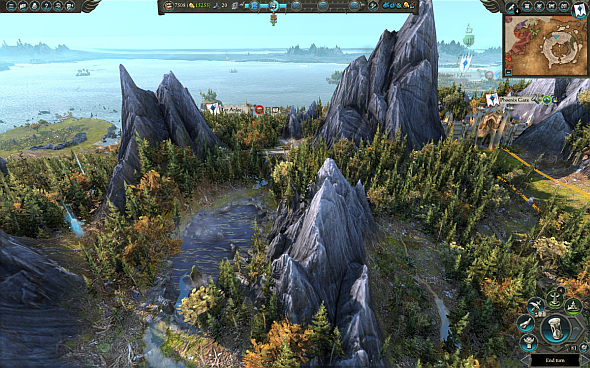
The new map may be only slightly larger than the original’s by settlement count, but it has got a bloody great ocean in the middle and features four very different continents. This creates a more expansive, grandiose feeling – Warhammer II is a global conflict, not a continental one.
Yet the strokes on this epic canvas are as fine as ever: rainbows shimmer in the white waters of Ulthuan’s mountain streams, stepped pyramids float above the jungle canopy of Lustria, a cruelly spiked wall marks the northern border of frozen Naggaroth. It is a nicer place to bethan the dour Old World, and though you can now control which AI factions you follow during their turns – a game-changing quality of life improvement – I often found myself sitting back and watching the camera fly around the world, enjoying the view.
Gameplay has been just as thoroughly considered. Take post-battle options. In the original game, I would nearly always ransom captives unless I knew I’d face another battle soon, in which case I went for replenishment. I seldom opted for execution, but this is much more tempting now since it gives unit XP rather than a leadership bump (though the Lizardmen get both). Ransoming now incurs a temporary penalty to your replenishment rate, while replenishment gives a more substantial boost than it used to.
Elsewhere, March stance is much riskier, since it no longer allows you to retreat if attacked. The game’s most commonplace activities – travel and combat – now pose much more interesting questions as a result of these changes. And the new climates mechanic further complicates matters – unlike the first game, races can colonise any settlement, but each has its own climate preference. You will incur big penalties on growth, construction time, and so on if you try to settle somewhere your race doesn’t like.
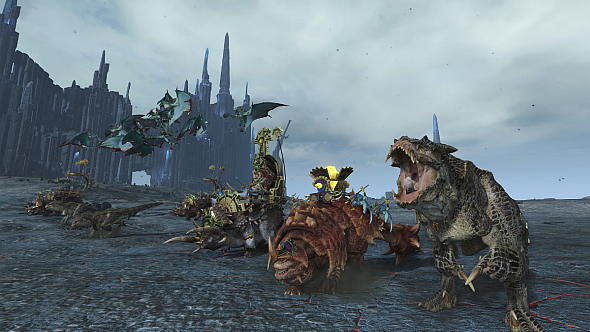
The original Total War: Warhammer was the first in the series to feature variable campaign mechanics, and the result was instant freshness and replayability. You haven’t reallyseen all it can offer unless you have had at least 50 turns with each of its races, and I don’t think that is true to the same extent in any prior Total War. It is even more the case in the sequel, whose four races elegantly reflect their lore in the ways they play.
As a Dark Elf, you can capture slaves through raiding and pillaging, and distribute them around your empire to boost gold output at the cost of public order. The catch: you don’t get public order buildings (specifically, torture chambers) until tier two of your building tree, and you can’t switch off taxation to calm the people. You have fewer tools to control your slaves until you develop your cities, but if you let them die off, you will struggle to keep your armies in the field. You are forced to keep raiding and pillaging – as a Dark Elf should – but you need to plan your conquests to avoid public order problems (tip: don’t try to conquer Chaos-corrupted territory as Malekith).
The chittering Skaven are also nudged to expand, with their unique currency – food – acting as both carrot and stick. The stick: armies consume food, and consistent sources are rare, so you will have to keep adding to your stockpile through conquest. You literally eat what you kill. The carrot: given enough food, the Skaven get lots of growth and morale buffs, and can start new settlements at up to building tier three. This enables them to spread quickly, like the vermin they are.
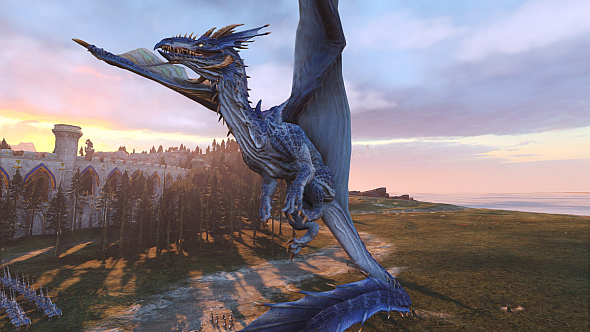
The Lizardmen, by contrast, are turtlers. They get a unique building chain that, if adjacent to another of equal or greater level in the next province, grants a stronger version of Total War’s traditional provincial commandments. The Lizardmen get better commandments than anyone else anyway, and at higher levels they confer some massive benefits.
Want an example? At tier five, the Alignment of War gives +15% weapon strength and +10 leadership for local armies, +2 unit XP and -30% cost for local unit recruits, and +1 global recruitment capacity faction-wide. In non-nerd, this means you can raise powerful armies much faster than anyone else, given enough money. Accessing such bonuses is a terrific incentive to develop your buildings, and makes the Lizardmen the masters of territorial defence.
Finally, for Total War traditionalists, the High Elves’ mechanics don’t push a particular playstyle, but they add some neat tricks. For one, they see everything their trade partners see, and can use their unique currency – influence – to raise or lower diplomatic relations between any two factions in the world. By manipulating my way into others’ affections, I brokered a cascade of trade deals, exploring half the world without leaving Ulthuan – very thematic, for the haughty yet nosy Asur.
Though Warhammer II shoots for new heights of quality in its execution, its predecessor already broke this ground 16 months ago. Where the sequel contributes something new is by being the first Total War game to try to tell a story. All four races are vying to influence the Great Vortex, which the elves conjured long ago to drain Chaos from the world. Each must conduct five rituals to prepare some macguffin or other – an enchanted crown, a magical potion – which is their particular key to bringing the Vortex under their control.
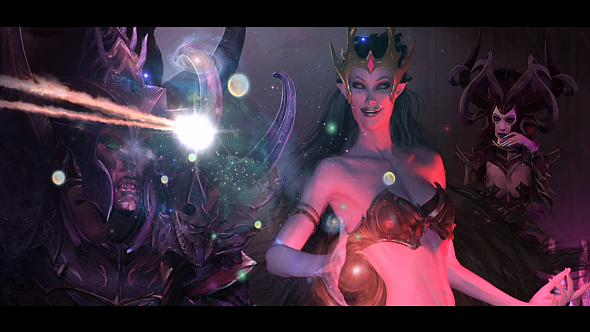
Whenever you complete a ritual, you’re treated to a cutscene depicting your faction’s sages carrying it out. Strategy games by their nature default to a distant overview of the world, but these videos – comprised of voiceovers and lavish artwork – offer a more personal perspective. The arrogance and pettiness of the High Elves, the cruelty and vanity of their Darker kin, the lunatic malice of the Skaven, the cold-blooded contempt of the Lizardmen – all are on show, and can be reviewed at any time via the menu.
Warhammer is a world founded on Tolkien-esque fantasy tropes, which developed its own identity only after gradual injections of grimdark, administered over 25 years. Few understand what it has become better than CA’s lead writer Andy Hall, who used to work for Warhammer creators Games Workshop. In less expert hands, any Warhammer game could easily become a cringeworthy parade of fantasy’s greatest cliches. As it is, Total War: Warhammer II has only the minimum required quantity of ham, and its quality as a setting is allowed to shine.
As Games Workshop themselves say in the end credits, this is a masterpiece of authenticity and world-building. Warhammer fans will, once again, be overjoyed at the fidelity with which the setting has been realised, but everyone else will be able to sense it. A brief word of praise for the voice acting, too: Malekith in particular sounds like a total badass, Teclis is appropriately frail and wimpy, and I’ve decided I also enjoy the guttural grunting of Lizardmen Sauruses. It is totally incomprehensible, but on reflection, I realise I probably shouldn’t expect to understand a talking dinosaur.
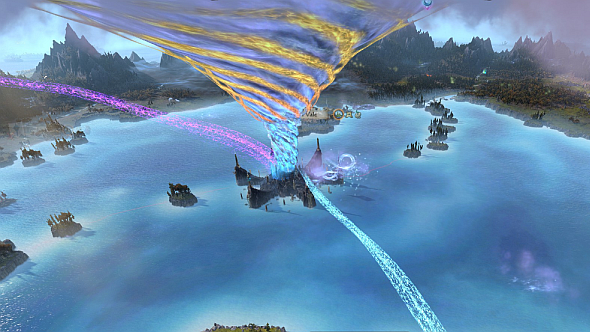
Total War has not suddenly become StarCraft, however. This is still a sandbox campaign rather than a sequential one, and the story is really nothing more than a flavourful wrapper for the new Vortex victory condition (though CA do manage a pretty neat plot twist towards the end). CA have said this is their attempt to address a common strategy game complaint: that once you emerge as the pre-eminent power, the campaign is won in essence, and technicallywinning is just a tedious formality of busywork.
In solving this problem, the Vortex victory is a substantial but not total success. Leading in ritual currency and leading by every other metric are far from mutually exclusive – indeed, they often go together – and approaching the Vortex win as Tyrion, I felt almost as dominant as ever I used to. Malekith was nipping at my heels, however, and started his final ritual just a few turns after I did mine, which shows you can’t afford to delay.
Then there are the artificial challenges inherent in attempting the rituals themselves. They take ten turns to complete, apart from the fifth and final, which takes 20. You need to hold three of your strongest cities until the ritual completes. During that time, any Vortex rival can pay to send an ‘intervention’ army against one of the sites, but they can only send one. Much more troublesome are the armies of Chaos Warriors and/or Marauders who will spawn when you start each ritual.
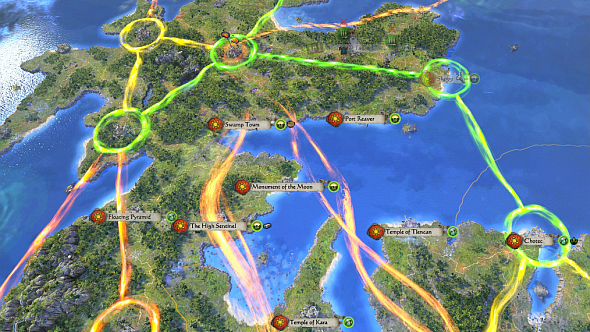
To my immense frustration, I regularly had full Chaos stacks pop up in the heartlands of my empire, near cities that I had left vulnerable because they were well within my borders and safe from any other form of attack. I reloaded a few autosaves to see if the appearance of these Chaos armies responded to my own positioning, and my current theory is that they spawn wherever your troops aren’t, with proximity to your ritual sites only their second priority.
So I could do nothing but watch while they tore the guts out of my economy. It wasn’t much fun, especially after I had done what I thought was the prudent thing by defending my ritual sites well.
I can guess at what CA were going for here: the tension of knowing that no city is ever truly safe; the rubber band mechanism to keep you from pulling too far ahead; the sense of escalation as you approach the endgame, when stronger Chaos armies spawn (by the fourth and fifth rituals, you can expect at least five full stacks of high-tier units); and so on.
If that sounds appealing to you, by all means don’t consider this a criticism. Personally though, I like curating an efficient empire, and right now I feel like losing at least a couple of cities is inevitable with each late-game ritual no matter how well I prepare, which isn’t a great feeling. It does fit the Warhammer universe, I suppose. Technically you can still win a traditional domination victory, but its objectives are so demanding – and you will accrue so much ritual currency by pursuing them in any case – that in practice the Vortex victory is by far the quicker and more tempting.
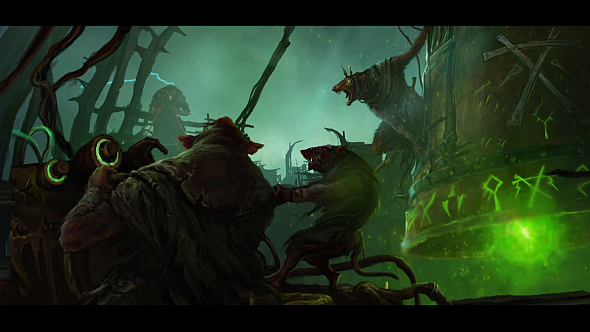
But this mismatch in the pacing of the two victory types, and the frustration of dealing with the ritual-spawned stacks, are my only substantial gripes with this game. Others are minor. It still devolves into notification dismissal simulator at the end of the campaign, but so does every other grand strategy game. There were some technical hitches, particularly when it came to quests: I was once told to sign a non-aggression pact with a faction I had confederated, and to make peace with a Vortex rival after I’d finished my fourth ritual, which locks you into a non-negotiable state of war with all of them. I guess that means I missed out on rewards I could have gained through a winnable quest, but I didn’t feellike I missed them.
Inevitably, Warhammer II will get a truckload of free and paid DLC, which takes us into a grey area when it comes to value for money. Your standard may differ from mine, but I am generally comfortable with DLC if the base game feels complete without it, and there is no doubt that Total War: Warhammer II offers a lot of replay value: I have almost 40 hours clocked, and I am nowhere near finished. If you are content to pay for new factions, you can expect to get even more mileage out of it when they are ultimately added, but it is worth noting that a lot of the original game’s DLC was entirely free. This included several new Legendary Lords and the Bretonnia update, which was essentially a whole new race. I do wish Warhammer II’s armies would launch with their full tabletop roster, but I guess you would only know there are units missing if you are a tabletop fan.
Overall, these problems don’t take much from Total War: Warhammer II. On a trip to the studio about ten months ago, Creative Assembly told us that the success of the original had caused them to re-evaluate their ambitions for the rest of the series, and this game does feel like a step change in that respect. This is a rich and thoughtful strategy game that is a joy to engage with at practically every level, and a new high-water mark of ambition and quality for Creative Assembly.
Check out our sister site Wargamer for helpful information on the Warhammer 40k factions, and all of the Space Marines information you’ll ever need.
